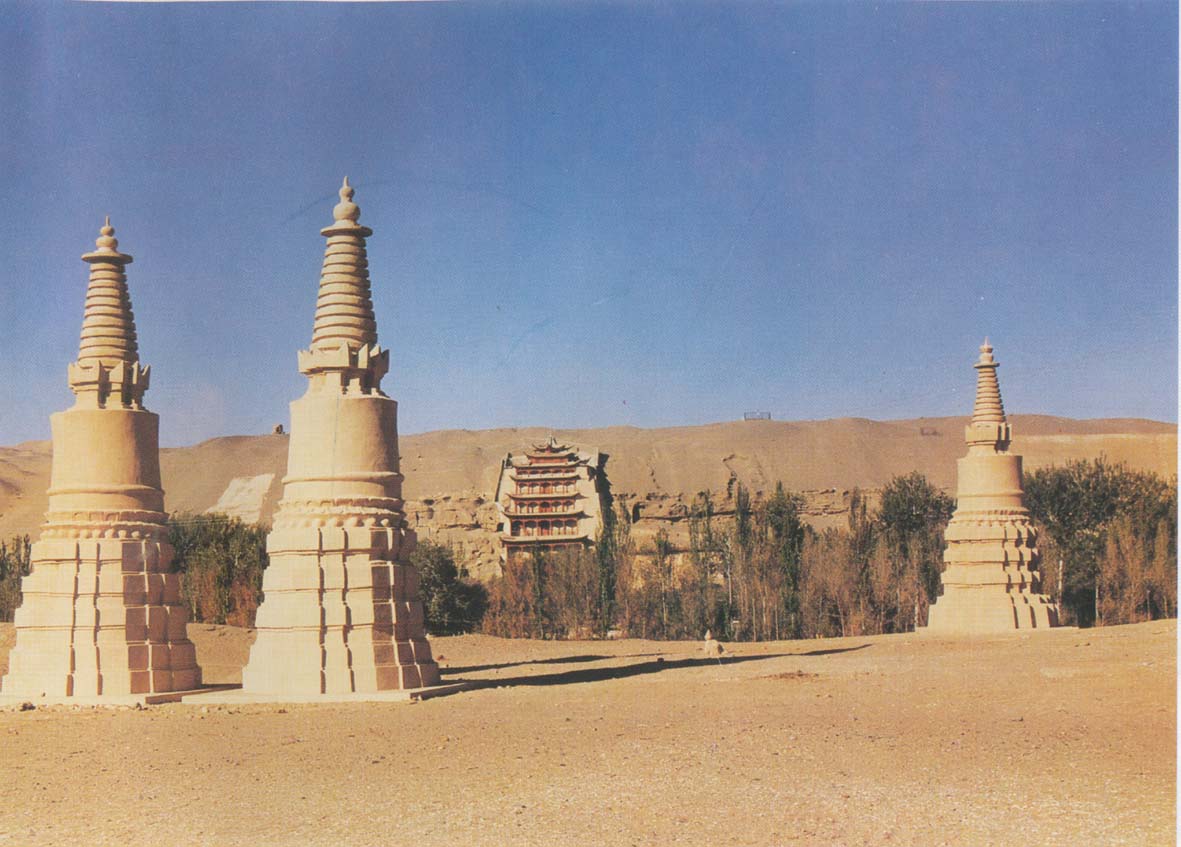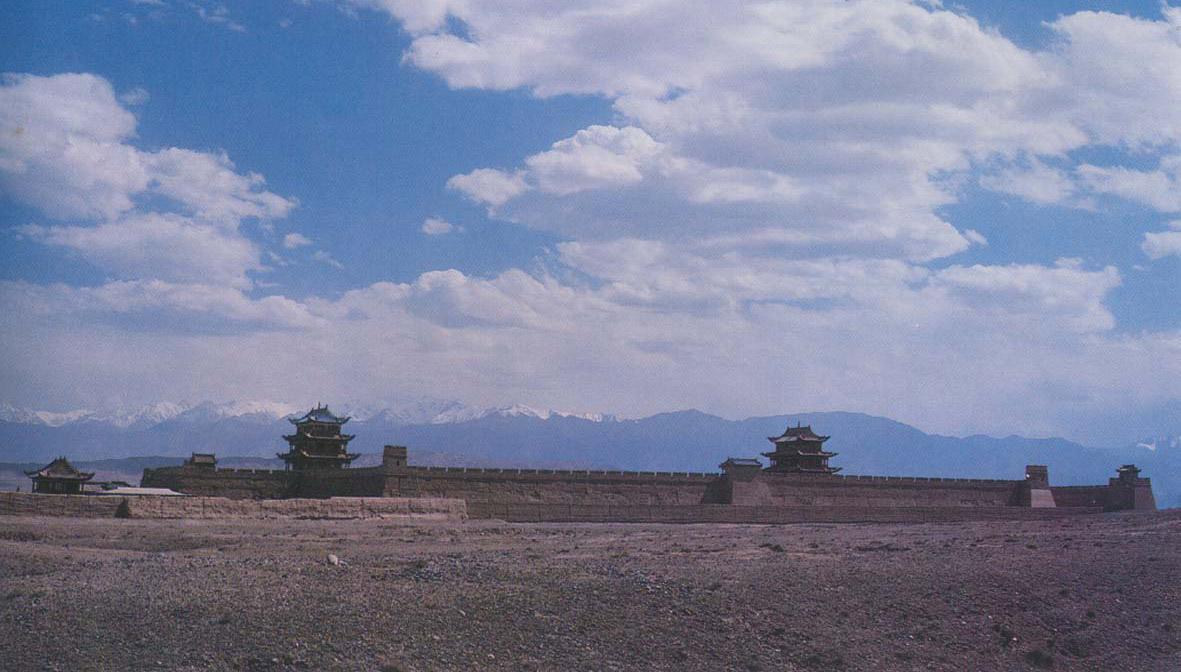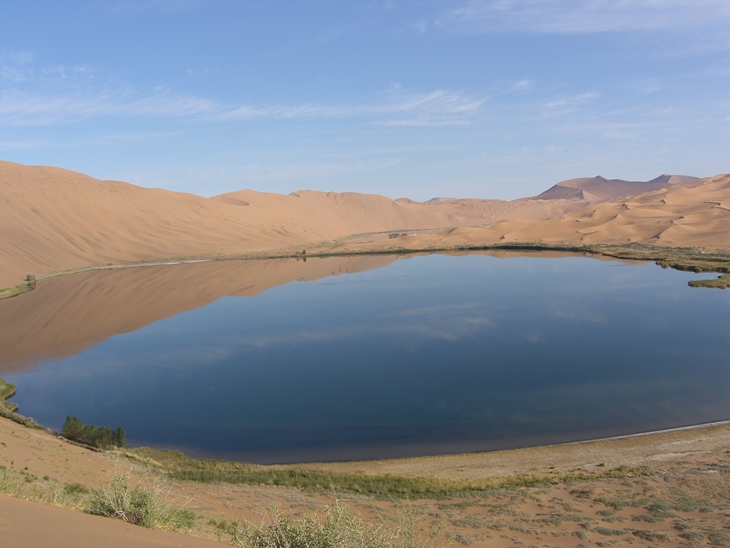- Jiayuguan
- Jiayuguan Cultural Relics
- Number One Beacon Fire Tower
- The Overhanging Great Wall
- Wei Jin Dynasties Tombs

.jpg) |
 |
 |
.jpg) |
|
Jiayugaun
Jiayuguan is located in the northwestern Gansu Province and in the middle of the Hexi Corridor. In ancient times it was called Biyu Vale, meaning “fine vale”. After the Qin Dynasty, it became a place of military and strategic importance because of its location, hence enjoying the name of “throat of Hexi” and “Lock to the Frontier.” The City covers an area of 2935 km2. Its total population is 234.3 thousand. 8 roads are under its jurisdiction.
Jiayuguan is a rising modernized city developed with Jiuquan Iron and Steel Company the key construction project of “First-Five-Year Plan”. The city gets its name from Juyanguan Pass at the west end of the Great Wall of the Ming Dynasty. It originally belonged to Jiuquan County. In 1955, an iron mine was discovered in Jingtieshan Mountain of Sunan, hence the establishment of the Jiuquan Iron and Steel Company. Then with the original town and some areas under Jiuquan and Sunan Counties’ jurisdiction, the Preparatory Committee for Jiayuguan City in Gansu Province was set up. In 1965, the City was established. In 1971, approved by the State Council, it became the Municipality Directly Controlled by a Provincial Government.
The City has a temperate continental desert climate, with an average annual temperature between 6.7℃ to 7.7℃ and annual average sunshine hours of 30000.2. January is the coldest month; the extreme minimum temperature is -28.6℃. July is the hottest; the extreme maximum temperature is 38℃. The best tourist season lasts from May to October each year. And October is the finest time to climb July 1st Glacier. Wearing sunglasses, sunblock and climbing shoes, tourists can experience the joy of conquering the glacier.
In the early Ming Dynasty, Feng Sheng, the Duke of Songguo and Great General, chose the west side of Jiayu loess plateau which was a key junction in the middle of the Hexi Corridor, joined with Jiuquan at the east, Yumen at the west, against Black Mountain, and close to Qilian Mountain at the south, to build the pass. Facing water and with a hill at the back, the Pass of Jiayuguan, founded in 1372, guard the canyon land wide 15 km. Taolaihe Valley at the south of canyon was a natural defense of the Pass. Near the Pass, beacon fire towers and alarm stations were intersecting. There are totally 66 alarm stations in each direction of the Pass. Owing to its natural location, Jiayuguan Pass could be both defensive and attacking. It constituted a tight military defense system with the neighboring walls, platforms, moats and beacon fire towers. So it is honored as “Number One Mighty Pass Under the Sun”.
It is faintly visible that the Silk Road opened up for the economic and cultural communication between China and the West, and beacon fire towers on the ancient battlefield experiencing wars. Here is the intersection of the Silk Road culture and the Great Wall culture. Along the old Silk Road upward to the west, grand Great Wall, numerous cultural relics and works and records, mysterious mountain and water combine to make the ancient road glorious and glittering. |
 |
||
 |
|||
 |
|||
.jpg) |
|||







